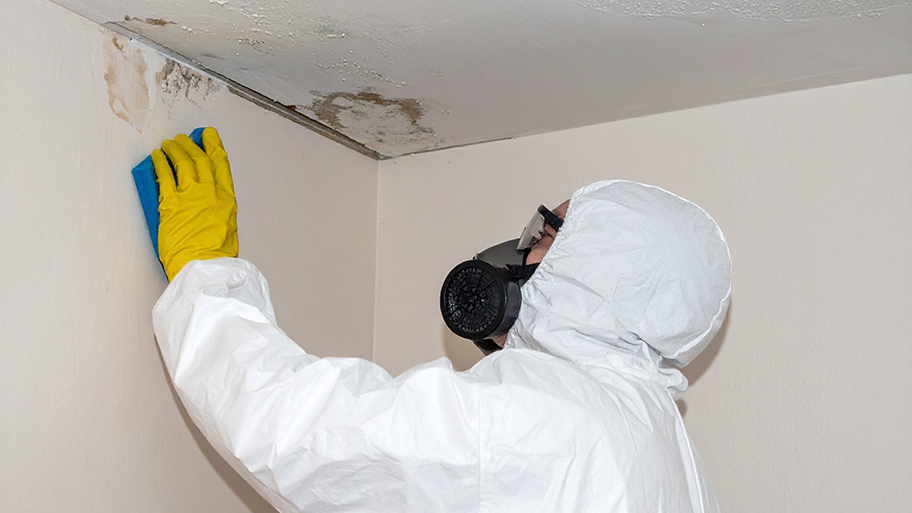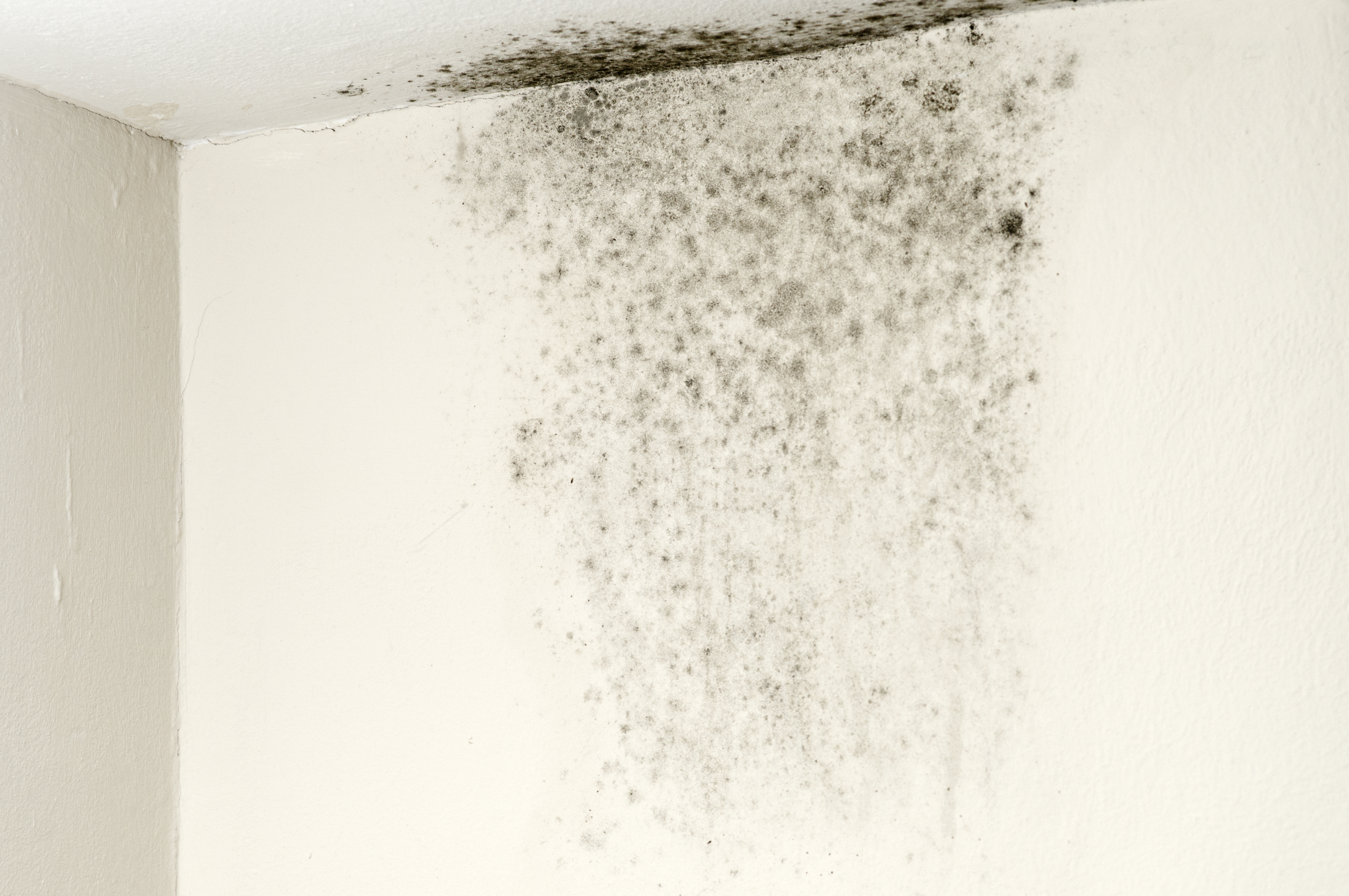
Mold remediation cost can quickly escalate. But if you have mold in your home, the cost for mold remediation is worth it.
Eliminate mold in your furnace and breathe easy in your own home again


Mold is gross unless you like blue cheese, and even then, that’s not the kind of mold you’ll find growing in moist, warm places like your furnace. While you might expect to see mold on porous surfaces like carpeting or drywall, mold spores on a metal surface might surprise you.
Since mold spores travel through the air, it’s not uncommon for mold to grow inside furnaces and air ducts. These spaces are rife with ideal conditions for mold growth, including heat, moisture, and moving air. If your home smells musty or you see suspicious growth outside or inside your furnace, you could have a case of mold.
There are several things to watch for if you suspect you have a mold problem in your furnace.
Musty odor: Mold thrives in damp, dark environments and the furnace interior, especially the ducts, provides an ideal breeding ground. A persistent earthy or musty smell when the furnace runs can indicate mold in the evaporator coil or ductwork. The smell worsens when the furnaces are on as mold spores circulate.
Obvious leaks or puddles near vents: Due to poor ventilation or high humidity levels, condensation collects in or around the furnace, ducts, or vents, creating the perfect mold growth environment. In addition to finding leaks or puddles near vents, look for water stains on walls, ceilings, and floors.
Noticeable mold outside ducts: If you notice visible mold, the problem has spread or been present for a while. Mold accumulates on exterior ductwork if there's a leak or significant moisture buildup inside. Even if there's no mold inside the ducts, its presence outside of them shows the system is conducive to mold growth.
Allergy or cold symptoms: Mold triggers respiratory issues and exacerbates allergic reactions. Mold spores in the air could cause persistent allergy symptoms like sneezing or coughing and cold symptoms such as a stuffy nose or sore throat. You or someone you live with might experience these symptoms when the furnace is running.
When there’s mold in your furnace, there are also risks. The primary concern is that, since your furnace distributes the air throughout your home via air ducts, the mold spores will also spread. Mold spores may impart multiple health risks, including allergic reactions and asthma. If anyone in your home has asthma or allergies, mold’s presence can make symptoms worse.
Some types of mold, such as black mold, can be harmful to your health. If you suspect black mold is in your home, hiring a mold remediation pro is the only method to completely remove it.
If you find mold in or around your furnace system, you should eliminate the issues as quickly as possible.
Before taking any steps, you want to make sure mold is present. Check the area around your furnace and near vents for signs of mold. You may also get a whiff of a mildewy or musty smell. Mold may appear in green, gray, black, white, or brown shades and is typically fuzzy or slimy.
Before you clean the area, make sure to turn off your furnace. Airflow moves spores around your home and could make the cleanup process difficult or unsafe.
If the mold is new and contained in a smaller space, you may be able to eliminate the problem with a mixture of water, baking soda, and dish detergent. Combine the ingredients into a spray bottle and soak the infested area. Make sure to wear gloves, goggles, and a face mask when handling the mold.
You may want to discard any cleaning rags you used to tackle the moldy area. Seal the rags in a sealable bag before throwing them away. If you opt to reuse the rags, make sure you wash them in hot water and bleach, separated from other clothing.
You should consider investing in mold inhibitors. A mold inhibitor is a spray or liquid that blocks the growth of mold and bacteria. You can spray mold inhibitors on your air ducts and all parts of the furnace. Make sure to reapply according to the manufacturer’s instructions and look for an EPA-registered brand.
Mold loves to grow in damp environments and furnaces are known to create excess moisture. When warm air comes into contact with cool surfaces, the way evaporator coils or ducts do in furnaces, condensation forms. High humidity or air leaks are other common culprits in furnaces that create an ideal environment for mold growth.
Clogged filters, poor ventilation, and skipped maintenance further contribute to moisture buildup, causing growth in hidden parts of the system. This growth is most common in areas where with limited airflow. The best way to prevent excess moisture is to keep up to date on all system maintenance.
According to data from Angi customers, most people (35.2%) need mold removed from their interior walls or ceiling, and 21.5% need mold removed from a basement or crawl space. Mold is commonly found in rooms that see a lot of moisture, so keep a lookout in your bathroom, kitchen, and basement. Call a pro as soon as you notice signs of mold to keep a small growth from becoming a much bigger problem.

In many cases, you can tackle mold in your furnace on your own. If you catch the mold early, you can prevent the mold from spreading throughout your home. You can clean the furnace and accessible ducts for less than $50 in a few hours.
However, if you suspect the mold has been present for a long time, you should consider hiring an HVAC professional to inspect and clean your HVAC system thoroughly. Hiring a professional can be particularly helpful because they’ll have tools to clean and disinfect your entire system. The average cost to hire a professional to eradicate mold in your furnace ranges from $1,100 to $3,300.
From average costs to expert advice, get all the answers you need to get your job done.

Mold remediation cost can quickly escalate. But if you have mold in your home, the cost for mold remediation is worth it.

The cost of a mold inspection might seem high, but it’s one of the best investments you can make for your health and home. Read on to learn cost-saving tips.

Learn how to tell black mold from black mildew by their look, location, and texture so you can clean it up yourself or know when to call in a pro.

When you see some sort of growth in a damp area of your home, you want to know the differences between mildew and mold. Learn more about these two types of fungi.

Mold on wood is a common problem that needs to be removed to prevent health hazards and structural damage. Use this guide to learn how to kill mold on wood.

A mold inspection is your first line of defense against a mold problem. Here’s what to expect from your visit and how to prepare.